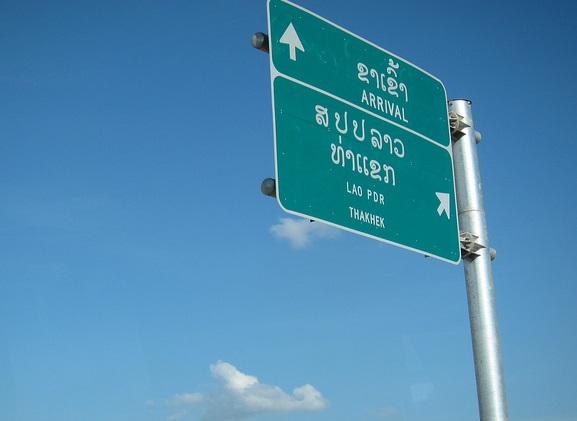Ivory and transnational crime: big issues in Laos
Posted By John Coyne on April 14, 2015 @ 14:30
 [1]Laos People’s Democratic Republic (LPDR) has become a regionally significant hub for transnational organised crime syndicates. Faced with serious border security challenges brought on by its shared borders, endemic corruption and central location in Southeast Asia, LPDR should be of greater strategic interest to Australia’s law enforcement community.
[1]Laos People’s Democratic Republic (LPDR) has become a regionally significant hub for transnational organised crime syndicates. Faced with serious border security challenges brought on by its shared borders, endemic corruption and central location in Southeast Asia, LPDR should be of greater strategic interest to Australia’s law enforcement community.
Trafficking is a case in point. On 19 March, in response to ongoing international concern, the Secretariat of the Convention on International Trade in Endangered Species of Wild Fauna and Flora (CITES) took a significant step in issuing formal correspondence [2] to all the signatories of its convention that the commercial trade in wildlife to and from the LPDR should be suspended until further notice. The move reflects the increasing role LPDR has played in the transshipment [3] of contraband elephant ivory, which is smuggled from Africa.
The disruption of the ivory trade and the CITES decision are symptomatic of the serious nature of LPDR domestic and border security challenges. And it provides an excellent opportunity for Australia to reflect on how LPDR is tackling border security, and what impact it’s having on regional organised crime.
LPDR offers transnational organised crime syndicates a permissive operating environment in the heart of the greater Mekong sub-region. Whilst corruption is a challenge for many of ASEAN’s members, the scale of the issue in LPDR is substantially greater. As highlighted by the United Nations Office on Drugs and Crime (UNODC) in 2012 [4], the LPDR is extremely vulnerable to transnational organised crime. This is hardly surprising given its endemic corruption; Transparency International [5] has ranked LPDR at 145th (out of 175) in its 2014 corruption index.
Geographically LPDR is positioned in the centre of the Greater Mekong region and shares borders with Cambodia, China, Myanmar, Thailand and Vietnam. Its porous borders, and strong cross-border cultural connections make it a logical point from which syndicates can transship illicit commodities across the Mekong region and globally through China’s legitimate trade systems. The strategic importance of LPDR as a regional and global international crime transshipment point can’t be understated.
Since the mid-90s LPDR has been open for business to domestic and international organised crime groups transshipping Amphetamine Type Stimulants (ATS), heroin and other illicit drugs throughout the region. In December 2014, the UNODC reported [6] increases in opium production in LPDR for the 8th consecutive year.
Crime groups exploit the LPDR with ease because of the combined impacts of its strategic location, endemic corruption and limited enforcement capacity. For the LPDR government the problem involves domestic and transnational organised crime groups cultivating opium poppies, manufacturing ATS and heroin, transshipping illicit commodities and corrupting public officials—a wicked problem for any government
Thailand has sought to address its border issues with the LPDR through a two-pillar strategy of stronger border controls and cross-border cooperation. In comparison, Vietnam’s unilateral efforts focus primarily on border security and patrolling. In both cases, the borders remain porous due to the impacts of limited resources, long remote frontiers, and corruption. The answer to denying criminal exploitation of LPDR will lie, in part, with regionally supported domestic anti-corruption reforms.
When it comes to corruption LPDR’s government has made all the right noises, adopting anticorruption law, ratifying the United Nation Convention against Corruption and forming anti-corruption committees. But where the rubber meets the road, the government consistently fails to enforce its anti-corruption laws and apply substantive penalties. The international community, including Australia, must insist that LPDR provide a credible action plan for dealing with corruption. And international donors should be prepared to provide aid focussed on enhancing the capacity of LPDR corruption investigators.
Australia’s one of the LPDR largest bilateral donors, a point that is frequently highlighted. Sadly, a review of Australia’s aid program in LPDR [7] reveals that the 2013–2014 results didn’t make any contributions to law enforcement capacity development, rule of law improvements or anti-corruption measures.
Given LPDR’s role in regional transnational organised crime syndicates, it’s time that Australia’s aid program focused on supporting law enforcement capacity development and anti-corruption reforms. LPDR corruption investigators are often unable to collect sufficient evidence to effectively prosecute cases of corruption. Modest aid investments in a specific sub-program to enhance anti-corruption investigators evidentiary collection capabilities is likely to have a substantive impact on prosecution outcomes.
CITES suspension of wildlife trade with the LPDR is unlikely to have practical impact on corruption or law enforcement. We have to look at the bigger picture. Reform of the border security and law enforcement in the LPDR will only occur through regionally supported capacity development programs. But if one of the LPDRs largest bilateral donors isn’t contributing to this much needed reform, who will?
Article printed from The Strategist: https://aspistrategist.ru
URL to article: /ivory-and-transnational-crime-big-issues-in-laos/
URLs in this post:
[1] Image: https://aspistrategist.ru/wp-content/uploads/2015/04/7176736776_4f763a2bc6_z1.jpg
[2] formal correspondence: http://cites.org/sites/default/files/notif/E-Notif-2015-013_0.pdf
[3] transshipment: http://www.itintl.com/what-is-transshipment.html
[4] 2012: http://www.unis.unvienna.org/unis/pressrels/2012/uniscp700.html
[5] Transparency International: http://www.transparency.org/country#LAO_DataResearch_SurveysIndices
[6] UNODC reported: http://www.unodc.org/documents/southeastasiaandpacific/Publications/2014/ops/SE_ASIA_opium_poppy_2014_web.pdf
[7] Australia’s aid program in LPDR: http://www.dfat.gov.au/geo/laos/development-assistance/Pages/development-assistance-in-laos.aspx
Click here to print.